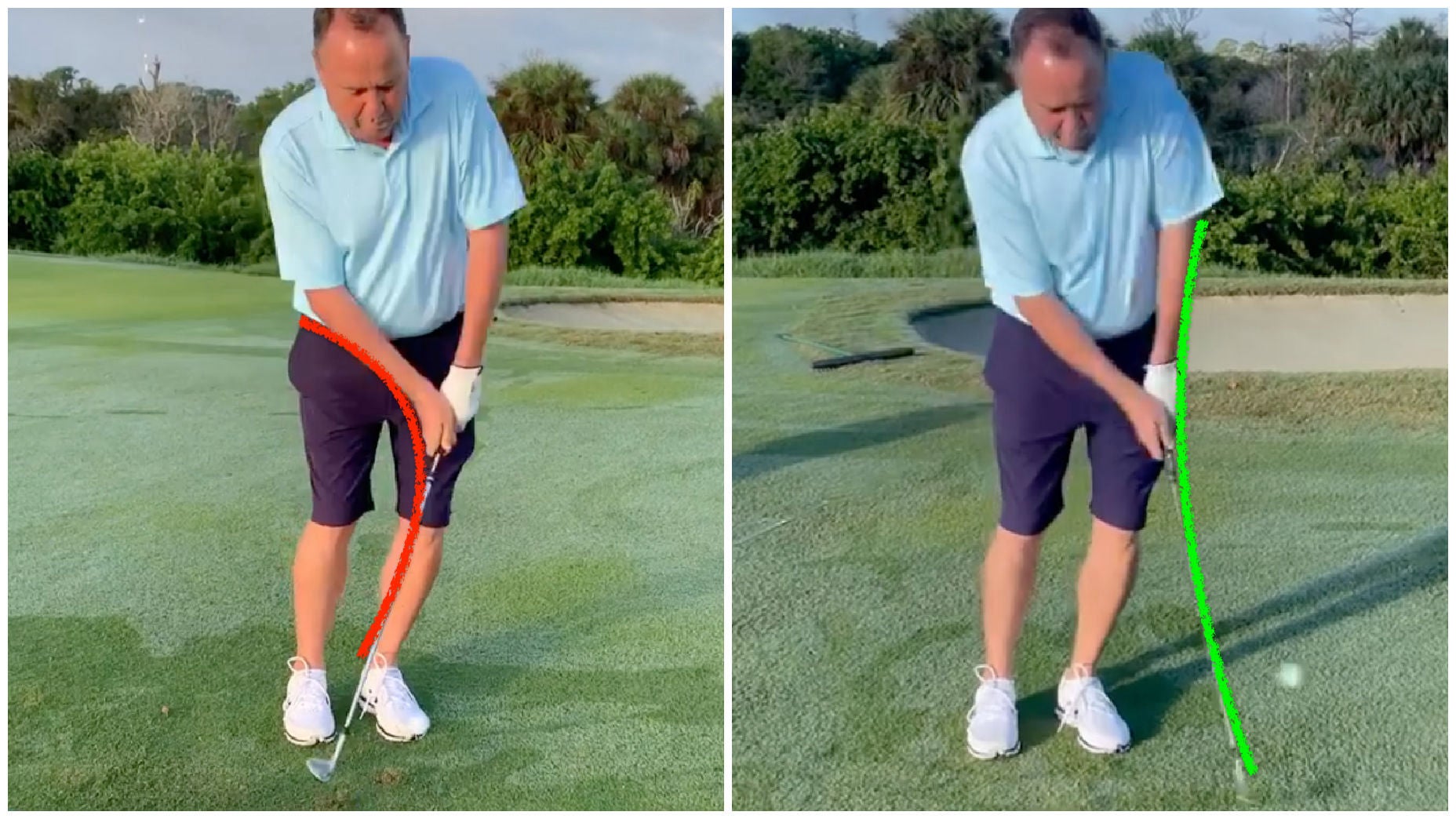It’s the word in golf most people are too scared to even utter: The yips. They’re most common on the green, but they can also occur around the green, too. Nerve-induced chunks and thins; there’s nothing more rattling than killing-off a good round with one of those.
But we’re not here to talk about the bad side of the yips. We’re here to talk about the good side of the yips: Overcoming them!
Which brings us to a happy story from GOLF Top 100 Teacher Jason Baile shared recently on Instagram. He had a student come to him that was struggling with the yips so badly, he had resorted to one-handed chip shots.
But that was just a band aid solution. When he placed his trail hand back on the club, the yips would return. His trail hand would shove the club into the ground, giving it a jerky motion that would send the ball a few inches in front of the ball.
But the issue wasn’t the yips, Baile wrote: It was a lack of lowpoint control — another way of saying that he didn’t know exactly where the bottom of his golf swing was.
1 swing thought that worked
In the left frame, Baile’s right hand taking over shows how his student kept too much angle in his wrists, and his body “shut down” — both of which sent the leading edge of his wedge into the ground behind the golf ball.
On the right, the yips were gone, because the pair worked on eliminating that wrist angle and feeling a release where the clubhead would pass his hands. That effectively shallowed out his golf swing; shifting his low point ahead of the ball, and letting the big muscles his lower body turn
“Once the low point control was established as the issue and not the ‘yips,’ the magic happened,” Baile writes on Instagram.
